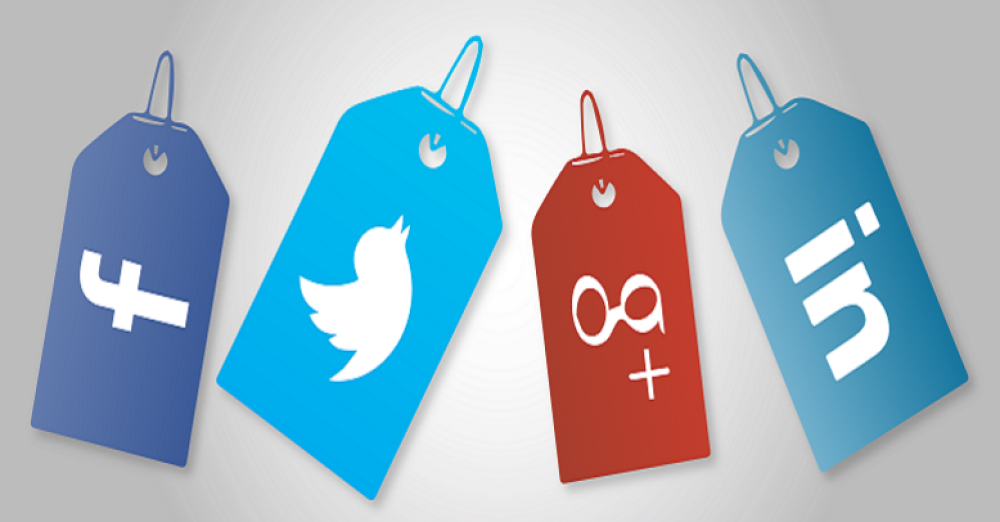The Difference In Social Selling Between B2C And B2B Marketing
04 Jan 2017

Social selling, aka social media marketing, harnesses the power of social media to create brand awareness, engage prospects, and most importantly, generate leads. Well, certainly for B2B marketing. The B2C social selling scene is quite different. Although it might have raising brand awareness in common with B2B, social selling for B2C is less about the selling and more about the marketing. B2C marketers can get away with sharing videos of dogs skateboarding because the focus is more on entertainment than education – they’re reaching out to people on a personal, rather than a professional, level. In this blog we’re going to compare B2B vs B2C social selling, and explore the reasons why this difference exists.
B2C marketers want their products & services to be desirable; B2B marketers need their brands to be industry thought-leaders
Let’s first examine the intent (of the marketer) behind social selling for both B2B marketing and B2C. B2C marketers want their brand to be seen as desirable – something consumers want based on (usually) emotional decisions. Cars, clothing, and food are often chosen because they’re going to make the consumer feel something – powerful, sophisticated, or trendy. B2C marketers need to play on these desires, and their social content needs to reflect this. B2B marketing is different. There’s far less emotion involved in the much longer buyer journey. B2B marketers want their brands to be seen as thought leaders and authority figures, appealing more to the cerebral side of their target market. Their social approach needs to be tailored accordingly – relying solely on videos of dogs on skateboards won’t cut it. B2B markets respond better to things like statistics, whitepapers and infographics, especially as they’ll have to justify potential purchase decisions to their colleagues.
B2C content appeals to individuals, rather than teams of individuals
Next we come to the content associated with social selling. In the previous paragraph I touched on the fact that B2C content appeals more to the emotional side of an audience, as they’re buying for themselves and not on behalf of a company with someone else’s money. B2B buying decisions usually involve a group of people, rather than individuals – B2B marketers need to be aware of this and create content that appeals to different individuals within a team (like IT, finance, or operations), as well as the team as a whole.
B2B customers seek out industry thought-leadership, which means content can be lengthier and more detailed
When B2B customers use social media they’re in work mode and seek out expertise; when you’re a consumer, chances are you’re more interested in entertainment and light relief, rather than blogs about how to streamline business processes and minimise financial risk. As such, the type of language used in B2B content can contain more jargon and more detail, and tends to be lengthier. That said, B2B marketing content needn’t be dry and lifeless. Yes, it needs to be authoritative, but remember that the people you’re targeting are still people!
The success of B2C social selling is defined by awareness and engagement
There wouldn’t be social selling without social channels. Facebook, Twitter and the glamorous worlds of Instagram and Pinterest are the platforms that B2C marketers fight to dominate. For them success is defined by the number of likes, views, shares and comments – their content going viral. It’s all about generating buzz, increasing engagement and driving more traffic to a website. Fortunately for B2C, an increase in website traffic often does equate to more sales, simply because B2C decision-making takes just a fraction of the time of a B2B decision-making cycle.
The aim of B2B social selling is to generate leads
While Facebook and Twitter are important platforms for B2B marketing, LinkedIn and LinkedIn Premium – and even YouTube – are platforms that can be effective for B2B social selling. Instead of measuring success by engagement and shares, B2B social selling measures its success through leads generated. How does it do this? Through sharing and promoting the content offers – guides, Ebooks, webinars, podcasts, and even events – that encourage potential leads to sign up and share their contact details (converting them from a stranger to a lead). Social media pages themselves can even be used to capture lead details with platforms like Facebook now offering a subscribe function.
Social selling is one of the key components of promoting inbound marketing content. Download the guide to find out how inbound can help your business generate more leads:
Image credit: pardot.com

Please login to comment.
Comments